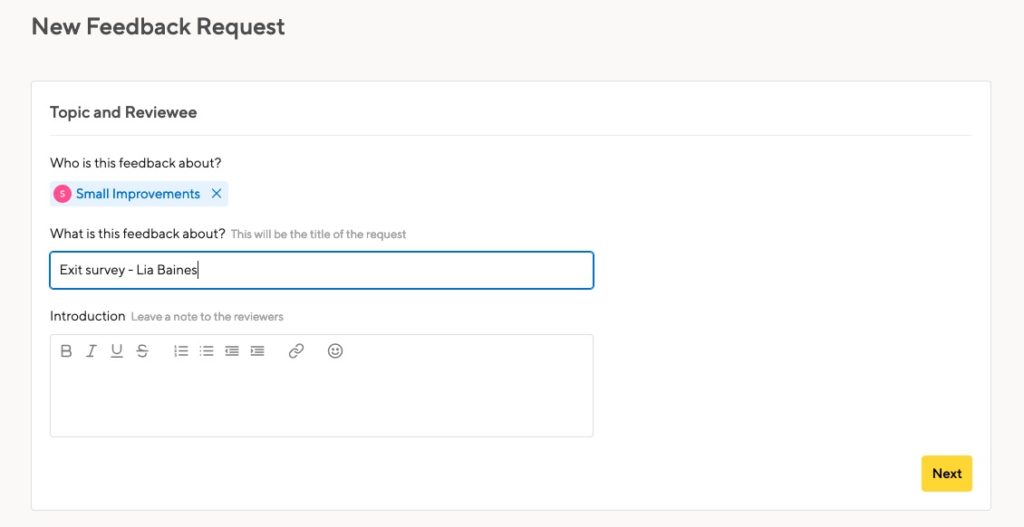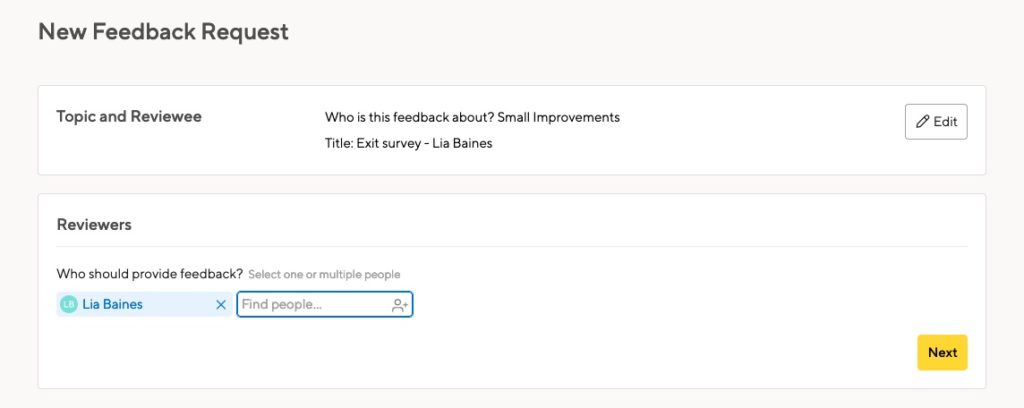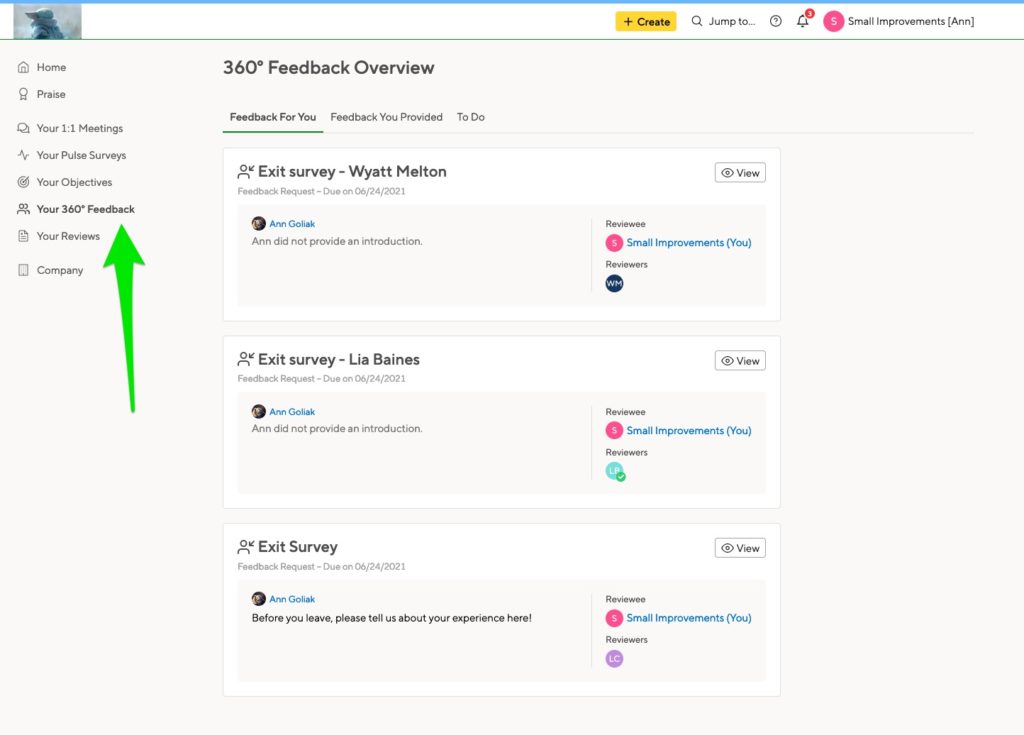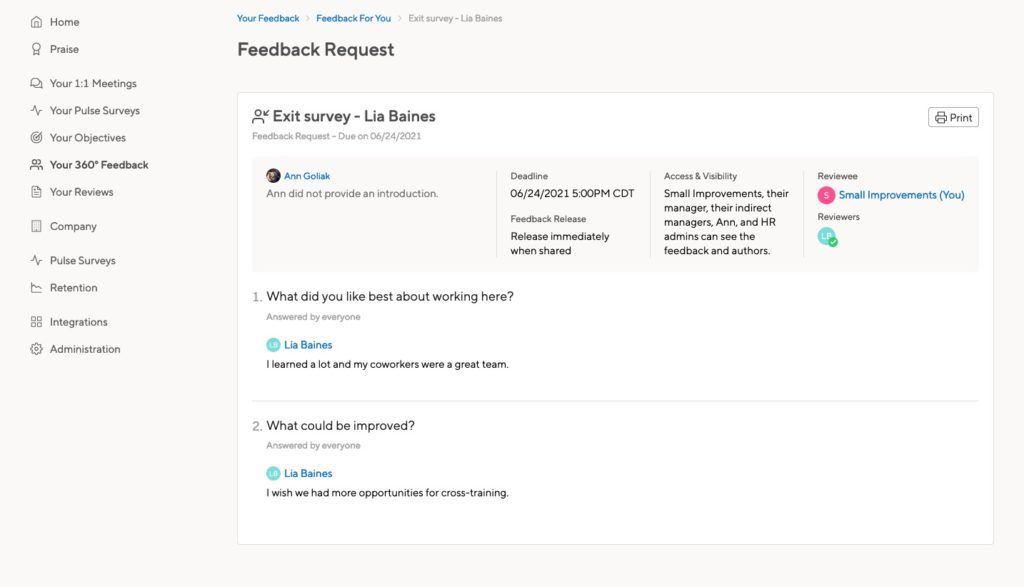
Conducting exit surveys using Feedback Requests
Feedback requests can help automate your off-boarding process.
Table of Contents
The reviewee
Feedback Requests need to be about a specific member of your account, so first, you’ll want to create your company as an account member.
Once you’ve done that, you can create a feedback request about your company. Click Create > Anytime Feedback > Feedback Requests.
Add your company user as the subject of the feedback. Then, you’re ready to add a title.
Tip: Include the exiting employee’s name in the title to make their feedback easy to find.

The reviewers
Next, add the people who are leaving as reviewers. You can add multiple people as reviewers, but if you create one survey per person, the results will be easier to find later on.

The questionnaire
Use a template to create your questionnaire. You might not want to ask engineers the same questions as marketing folks, and your interns might have different feedback entirely. Set up as many templates as you need!

When you create the feedback request, you’ll get a chance to add more questions or edit the ones in the template. You can tailor each exit survey to the individual.
Permissions
Now decide on the permissions. Who should see this feedback?
If you’ve set up the reviewee as your company, people in your HR team will likely be able to sign into that account. If that’s the case, allow your company reviewee to see everything.
This will collect all the exit surveys in one place. You won’t have to wade through other feedback requests to find the results.

Viewing the feedback
As the creator of the request, you can see the feedback on the Company > Feedback Requests page. But you’ll probably have other requests on that list, making finding all the exit surveys hard.
Instead, log in as the company user, and go to their Feedback page:

You’ll see everything in one list, and it’s easy to click on the survey you want.

Discover more resources

25 questions for a 360 review
Asking the right questions can help you have efficient and constructive 360 reviews. So what do these questions look like?

Transparent vs. anonymous feedback: Which should you choose?
Creating a culture of feedback sharing can be challenging. We share the pros and cons of transparent and anonymous feedback, and best practices.

How to make performance reviews human-friendly
[cs_gb id=12418] Organizations around the world carry out annual performance reviews, though many employees perceive it as a compliance-oriented and unfair process. But what employees tend to dread doesn’t have to be an ordeal. Here are 5 tips on how to help humanize the process. Increase frequency of performance discussions Performance happens in every hour of…

What HR needs to know about OKRs and employee goals
There are many misconceptions about how OKRs fit into employee goals and evaluations. Here’s why organizations should draw a clear line between OKRs and employee performance management.

Search, Upgraded.
Ever wanted to search for more than just a user name on our overview screens? We’re excited to introduce the ability of combined search criteria! Our latest small improvement enables you to search specific columns, add departments and even filter by status and location, in combination. That way, you can define whether you mean Chris the reviewee, the…

6 phrases to help you communicate better at work
These phrases can help you and your colleagues avoid miscommunication and effectively combine your perspectives when discussing ideas or giving feedback.